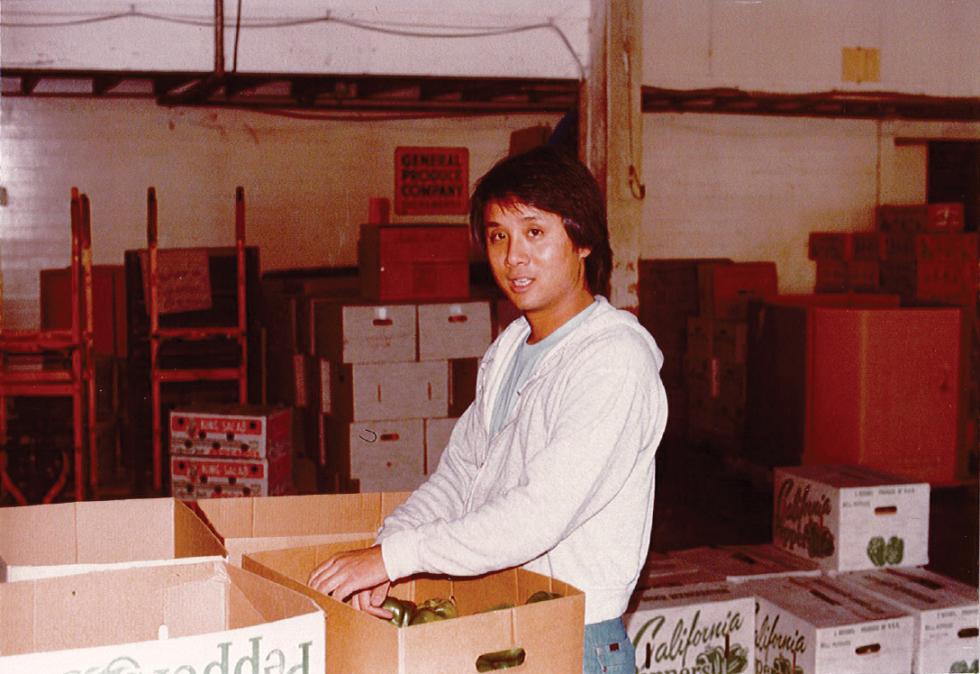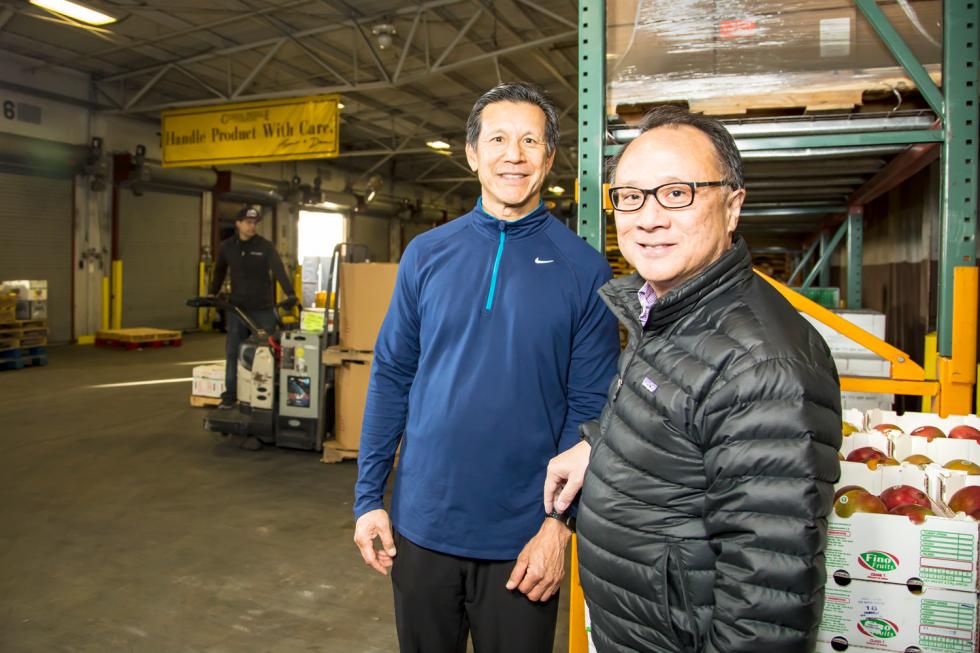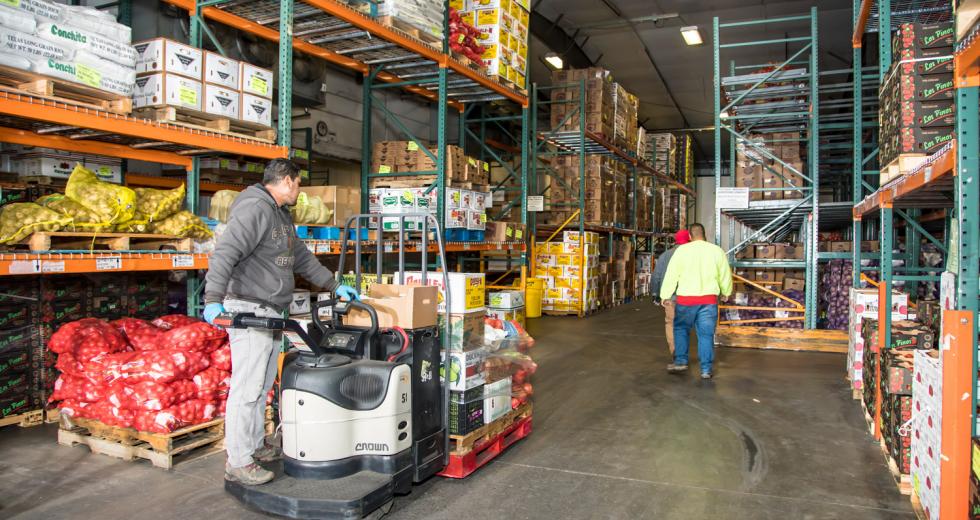From its headquarters in Sacramento about a mile north of the State Capitol, a fleet of General Produce white refrigerated trucks leaves each day for roughly 600 produce deliveries to recipients throughout Northern California and beyond, going as far as southern Oregon and western Nevada.
They deliver a wide range of fruits and vegetables to school districts, commissaries, grocery stores, hotels and restaurants. As they do, their progress is tracked by color-coded bars on a screen hung high on a wall back at home base, above dozens of men and women who manage the business from its office on the edge of downtown. General Produce is one of the largest and most prominent food distributors in the region, with a list of customers in Northern California that includes the Elk Grove Unified School District, Payless Markets, Sutter Health, the Ord Community Commissary at Fort Hunter Liggett, and Dos Coyotes Border Cafe, among many others.
General Produce carries 2,000 products and makes roughly 600
deliveries each day.

While food distribution has evolved to keep pace with trends and regulations that have shaped the U.S. food industry in recent years, General Produce has grown and modernized as well. However, it has also remained a family business for more than eight decades and three generations. In recent years, the emergence of farm-to-fork preferences has in some ways sent the company back to its roots, leading it to once again work with small local farms. But even with a growing emphasis on the locally-grown, consumer demand for year-round produce remains strong — making companies like General Produce, which receive products from other states and countries, an important market.
Related: How nepotism turns good business into bad blood
General Produce’s story starts in 1906, when Chan Tai Oy immigrated to California from China. Chan sold fish and produce in what is now Old Sacramento, making deliveries with a horse-drawn cart, a far cry from the 47 trucks his descendents manage today. He didn’t officially start General Produce until 1933, founding it that year with his three sons and one nephew.
Chan passed General Produce on to the next generation. It is now owned and operated by his grandsons, Tom and Dan Chan, who took over in 1979 on a bit of a lark and out of a desire to see the family business remain in the family — both left behind lucrative jobs with national companies in the Bay Area.
Now, Tom serves as CEO and Dan as president, although the two cousins work as equal partners, with Dan acting as the numbers guy and Tom handling marketing and sales. From humble beginnings in a horse-drawn cart, General Produce now employs a staff of more than 200. It also has a second, smaller distribution hub located in Mount Shasta.
When Tom and Dan took over, General Produce carried about 150 products. Today it carries about 2,000, including 30 varieties of apples alone. Customer demand for a wider variety of food — driven by increased concern over nutrition, more sophisticated palettes and interest in environmental sustainability — has forced this expansion as well as created niche demands for General Produce to satisfy.
“Our role now is to be able to educate consumers. They don’t just want a nice tomato, they want to know where the tomato came from, who grew it and what their ethical philosophy was.”Tom Chan, CEO, General Produce
One example of this is the increased demand for kohlrabi, a type of cabbage that can be eaten raw or cooked and which, to the untrained eye, looks like a cabbage/turnip hybrid. At one point in General Produce’s history, the company stopped carrying kohlrabi all together. It isn’t the tastiest vegetable, and demand among restaurant patrons and grocery shoppers simply wasn’t there. But with an evolving emphasis on healthy eating, General Produce now stocks more kohlrabi than ever, distributing it to schools that provide it to students as snacks.
“Our role now is to understand what consumers want,” Tom says. “I don’t think we’re in a position to drive people to certain fruits or vegetables. Our role now is to be able to educate consumers. They don’t just want a nice tomato, they want to know where the tomato came from, who grew it and what their ethical philosophy was.”
General Produce, currently run by cousins Tom and Dan Chan, has
been a family business for three generations and over eight
decades

Federal food safety mandates also require more accurate sourcing for agriculture. General Produce accomplishes this with software that tracks products from order entry through the receiving and delivery process. The days of buying products from unknown sources are long over. This more extensive tracking doesn’t require more manpower, but rather greater attention to detail at each step in the process. For packaged goods, including items such as salads or berries in plastic clamshells, a label must be affixed that tracks the origin down to the plot of land where the contents were grown.
But as the company continues to move toward the future, Tom and Dan are also careful to honor the past. In fact, in their office lobby there is a timeline that traces General Produce’s development, complete with old photographs demarcating certain milestones. One such photo is of Dan as a younger man, boxing peppers in the warehouse. It was taken shortly after the cousins had left behind their lives in the Bay Area to return home and ultimately take over the business. Neither of them knew at the time they would go on to successfully run the family company for many decades, guided by their complementary skill sets. Tom, sorting fruit just outside the frame when the image was captured, remembers asking Dan if he ever thought about how they’d traded corporate jobs in San Francisco in favor of the same tasks they did as summer workers way back in high school. They both remember with a laugh that Dan told Tom no, and to “just shut up and bag the oranges.”



